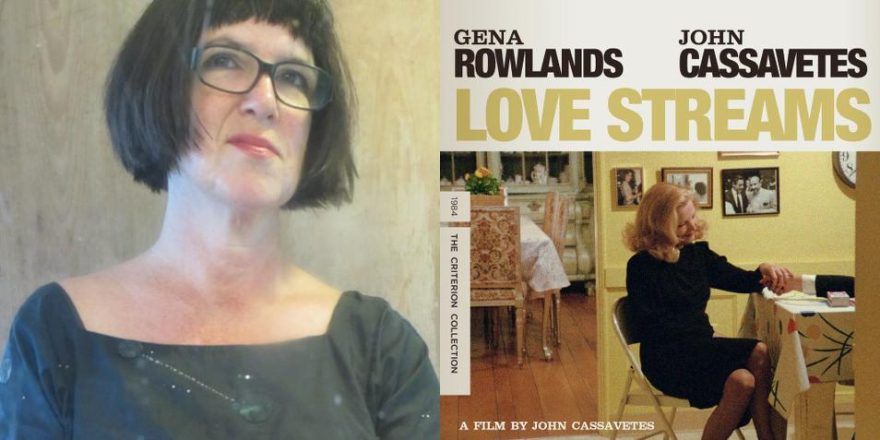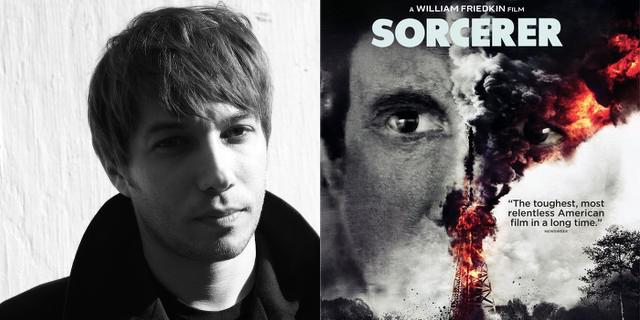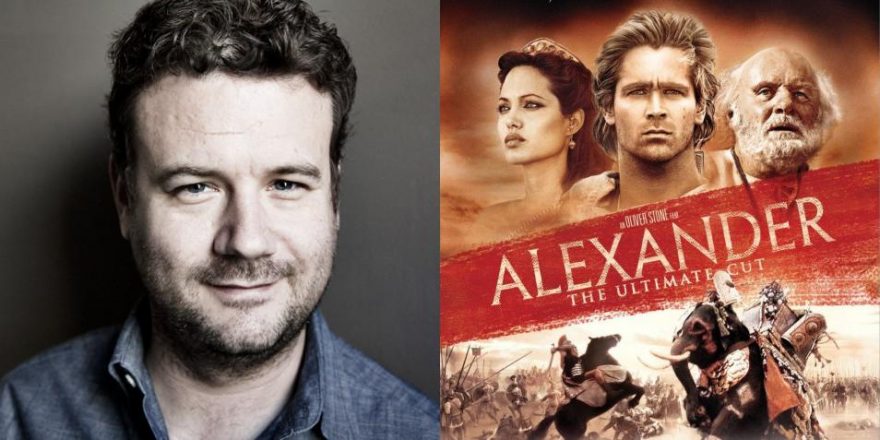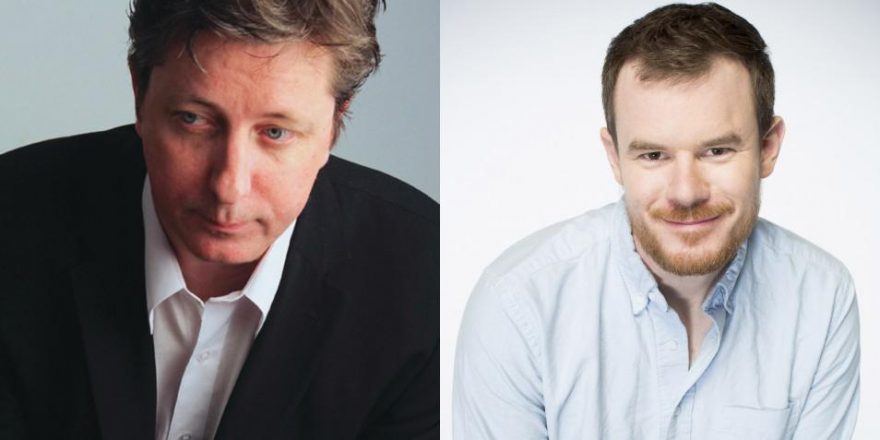When Love Streams first came out in 1984, I remember seeing it on some downtown New York screen and being only intermittently intrigued. I was in my early 20s, and my friends and I were all mad for Cassavetes, fully steeped in the canon, which we revisited in the years to come thanks to revivals at Anthology Film Archives and MoMA. (There was, of course, in those days, no way to see the work other than home video, which felt sacrilegious.)
Both among my coterie and in the press, Love Streams was largely deemed, next to Shadows, Faces, Husbands and above all A Woman Under the Influence, a somewhat sub-par effort. It felt like it did all the familiar Cassavetes things, the things that his champions view as proof of utter authenticity and detractors as contrived indulgence (outbursts, inebriation, barbed recriminations), only this time with farm animals, an opera sequence, and lots of rain. Basically, we took it for granted.
Little could I or anyone else have known then how that film would read now, three decades later and out of circulation for years, arriving from Criterion in a two-disc release ripe with bonus features. Love Streams is a film made by a man who knew he was dying and that this was very likely his swan song. (And it was, given that Cassavetes’ last official effort was the uncharacteristic Big Trouble in 1986.) It is an impassioned, dreamy assemblage, a film that was extensively restructured and rewritten while it was being shot and edited, and thus pretty messy, but so what? Even more than in the usual Cassavetes venture, to ask the film to adhere to some orderly schema is to miss its deeper meanings entirely.
Love Streams is about the mystery that lies between human beings dwelling in emotional extremity, which is of course the only place that Cassavetes’ characters can dwell. It’s about the things that cannot be spoken and can never fully be known, and if you ask to know them, you’re a dope determined to rob life of its more elusive qualities. It is, above all, about Cassavetes’ great, self-proclaimed theme — love — and contains more than one reference to the titular notion that love is like a stream, and cannot be stopped. This idea is perfectly articulated by the particular alchemy of Cassavetes and Rowlands, and the film is an overt valentine to their creative and domestic partnership, which remains enviable for both its sexiness and depth.
The story of two volatile siblings whose paths run parallel and then cross as they navigate the impossibility of creating their own, reasonably non-turbulent adult lives, Love Streams features Cassavetes and Rowlands as the central brother and sister duo. Of course they look nothing like siblings, and everything like husband and wife. In fact, up until two days before shooting, the far more plausible Jon Voight was cast in the part of the brother, having already acted opposite Rowlands in Cassavetes’ stage version of the material, a play by Ted Allan, whose work was revised and then partially abandoned during production.
Voight and Cassavetes fell out and the director, desperate to save his film — which, in a further improbability, was financed by legendary ‘80s schlockmeisters Golan and Globus — stepped into the part. This last-minute casting change completely shifts the meaning of Love Streams, especially in retrospect, and gives it an almost unbearable resonance and melancholy. It is literally about the end of something: the love stream that does run out, at least in temporal terms. Watching it today is largely about watching Cassavetes and Rowlands do for the very last time what only they can do together.
Cassavetes was already sick with cirrhosis of the liver, and had been told he would die within six months when he started production on Love Streams — although he managed to hang on for over five more years until the disease finallytook him in 1989. It seems impossible now that anyone could overlook how compromised he was when he made Love Streams. This is especially apparent in the essential making-of doc “I’m Almost Not Crazy…”— John Cassavetes: The Man and His Work by Michael Ventura, a former LA Weekly journalist who shadowed Cassavetes on set and who provides an invaluable, information-packed commentary track to the film as well.
Wardrobe and makeup concealed some of his symptoms in the film itself, but the Cassavetes we see in “I’m Almost Not Crazy…” — gaunt, jaundiced, with a distended cirrhosis-belly making him look weirdly pregnant — is remarkable for appearing to be completely unimpeded by his illness. He strides around set, upbraids those who aren’t performing to his full-throttle standard, plays the “make me laugh” game with his then-preteen daughter, Zoe (this shtick becomes a key, gag-laden scene in the film), and is rarely seen without ready access to both a cocktail and a pack of Marlboro Reds. He’s dying, all right, but not without a ferocious fight, which now feels simultaneously foolhardy and ennobled.
Cassavetes and Rowlands take this fact of the hourglass running out and use it in Love Streams to reveal exactly what can and cannot be known between them, both onscreen and off. The two characters don’t meet until an hour into the film, and the brother-sister relationship isn’t even suggested until 90 minutes in. Instead, she arrives in a cab, and he literally lunges into the back seat to hug her. It could be the embrace of two lovers, as could the intimate dance they do in the dark by a jukebox at the film’s midpoint, as could their heated argument toward the end. These encounters are freighted with all kinds of added frequencies — Rowlands in particular never acted elsewhere with the mercurial fluency she demonstrated in her husband’s films (as Sheila O’Malley’s look at Rowlands’ performances on the bonus features demonstrates). Here she is at once upended, fearless and tender. As for Cassavetes, he is committed to the deepest registers of unashamed feeling in his scenes with Rowlands. Together they do what Cassavetes does best, and what remains one of his lasting gifts to any filmmaker, fledgling or established: rehearse and rewrite to push dialogue and behavior to a ruthlessly honest, sometimes very funny and often extremely uncomfortable reflection of the most vulnerable aspects of what it means to be a human being, all while never explaining a thing.
There’s a great moment in “I’m Almost Not Crazy…” when Ventura juxtaposes interview clips with Cassavetes and Rowlands in which each speaks about the enduring enigma of the other. Cassavetes recounts how he discovered, after years of being unaware, that Rowlands not only played the piano, but played well. He was so stunned he didn’t speak to her for weeks. Yet evidently he relished that she kept her secrets. Rowlands speaks of her mate’s core mystery with a sensual appreciation that suggests the trait is forever an asset rather than a detriment; it encouraged her to keep risking, to go deeper, to continue exploring.
Cassavetes and Rowlands were engaged in the process of discovering on film the most complicated ways people could interact, struggle and bond. Love Streams affirms how powerfully that worked, without ever being able to tell us precisely how it happened. The final images of the film are separate depictions of farewell, first hers, then his, shot through rain-streaked glass — as if to remind us that some layers are best left impenetrable, if only to make us keep wondering what lies behind them.







